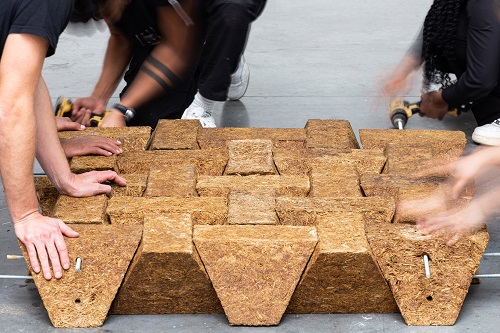 Friday, September 27, 2024
Friday, September 27, 2024  Friday, September 27, 2024
Friday, September 27, 2024 
Architecture studio Grimshaw and the University of East London have collaborated to create Sugarcrete, a biomaterial construction block with an interlocking shape made from the sugarcane by-product bagasse.
Sugarcrete was developed to be a low-cost and low-carbon reusable construction-material alternative to brick and concrete.
The concept, design and fabrication of the material were led by staff and fellows of the University of East London (UEL), including senior architecture lecturer Armor Gutierrez Rivas, Sustainability Research Institute co-director Alan Chandler and research fellow Bamdad Ayati.
The UEL team developed the material together with Grimshaw architect Elena Shilova and Grimshaw design technology director Andy Watts and with support from sugar brand Tate & Lyle Sugars.
According to the Sugarcrete team, sugarcane is the world’s largest crop by production volume, with almost two billion tonnes produced yearly worldwide.
Of this, 600 million tonnes of fibrous bagasse is created as a by-product.
Bagasse was mixed with mineral binders to create the Sugarcrete material, which was designed to be four times lighter and have 15 to 20 per cent of the carbon footprint of traditional bricks.
The material is also cheaper than concrete and its carbon emissions are 20 times lower, according to the team of researchers.